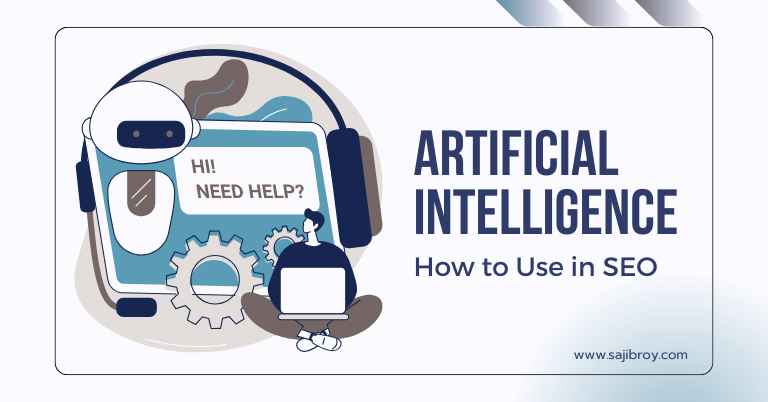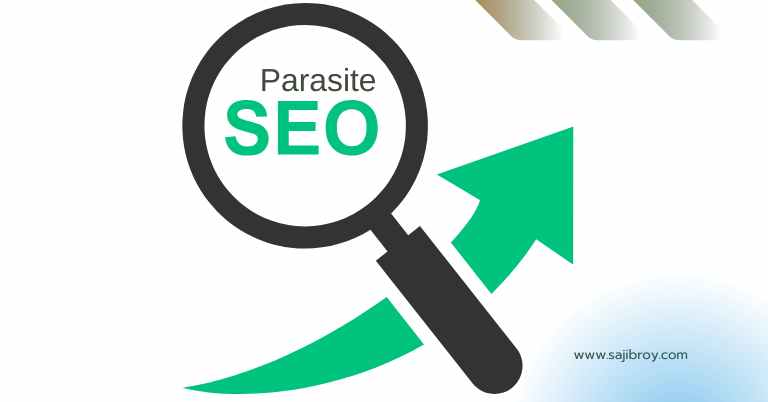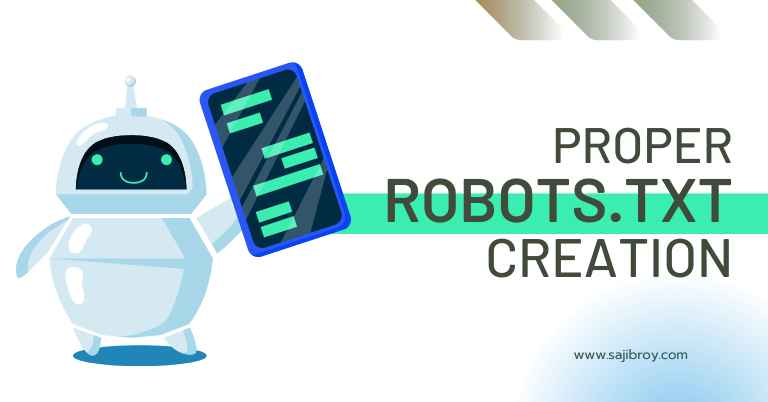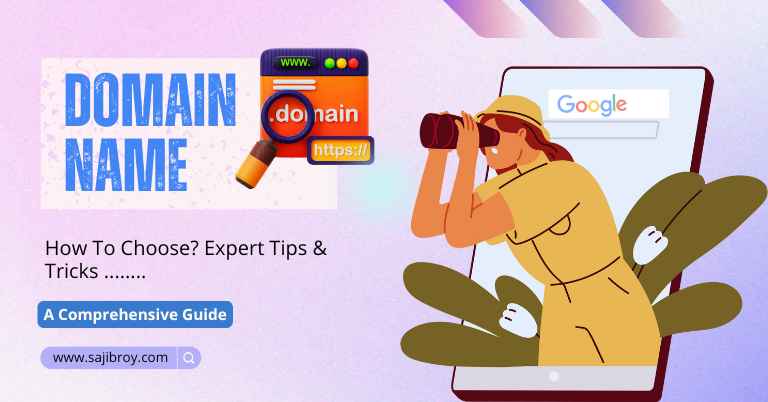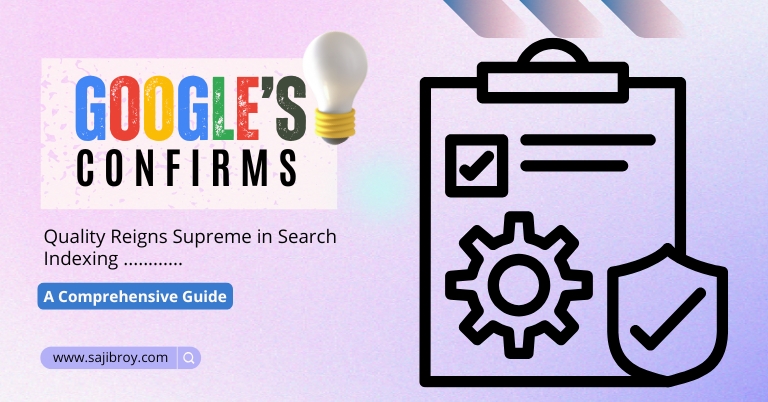A conversion funnel is a framework that guides potential customers through a series of steps to drive them toward completing a desired action on a website.
Turning prospects into loyal customers isn’t magic; it’s the art of mastering your conversion funnel.
In the ever-evolving world of digital marketing, understanding what a conversion funnel is and how to optimize it is crucial. A conversion funnel represents the journey a potential customer takes from the moment they become aware of your brand to the point they make a purchase. By optimizing this journey, businesses can significantly boost conversions and maximize their return on investment (ROI). Let’s dive into the intricacies of a conversion funnel and explore how you can enhance it to benefit your business.
Let's See the Topic Overview
Understanding The Conversion Funnel
What Is A Conversion Funnel?
A conversion funnel is a visual representation of the steps a potential customer takes from the initial stage of becoming aware of your brand or product to ultimately making a purchase or completing a desired action. The funnel metaphor is used because, similar to a real-life funnel, the number of people decreases as they move through each stage of the buying process, with only a portion of them converting into customers at the end.
A well-optimized conversion funnel is not just a path to a sale; it’s a journey that builds lasting customer relationships.
Top of the Funnel (TOFU) Strategies
At the top of the funnel (TOFU), the goal is to attract a wide audience and generate initial interest in your brand. This stage is about casting a broad net to capture the attention of potential customers who may not yet be familiar with your products or services. Here’s how to effectively execute TOFU strategies:
Content Marketing
Content marketing is a powerful TOFU strategy that involves creating and distributing valuable, relevant content to attract and engage your target audience. This could include:
- Blog Posts: Write informative and engaging blog posts that address common questions or problems your audience faces. Optimize these posts for search engines to drive organic traffic.
- Infographics: Create visually appealing infographics that simplify complex information. Infographics are highly shareable and can increase brand visibility.
- Videos: Produce educational or entertaining videos that resonate with your audience. Videos can be shared on social media platforms and YouTube, expanding your reach.
Social Media Engagement
Social media platforms are essential for building brand awareness and engaging with potential customers. Effective strategies include:
- Regular Posting: Share valuable content, updates, and promotions regularly to keep your audience engaged and informed.
- Interactive Content: Use polls, quizzes, and live streams to encourage interaction and gather insights about your audience’s preferences.
- Hashtags and Trends: Utilize relevant hashtags and participate in trending conversations to increase your visibility and attract new followers.
SEO and PPC Campaigns
Optimizing your website for search engines (SEO) and running pay-per-click (PPC) campaigns are key TOFU strategies to drive targeted traffic:
- SEO: Focus on keyword research to identify the terms your potential customers are searching for. Optimize your website’s content, meta descriptions, and titles to improve search engine rankings.
- PPC: Use PPC advertising to target specific keywords and demographics. Create compelling ad copy and optimize your landing pages to convert visitors into leads.
Middle of the Funnel (MOFU) Strategies
In the middle of the funnel (MOFU), the objective is to nurture leads and build relationships with prospects who have shown interest in your offerings. This stage involves guiding leads through the decision-making process. Here’s how to effectively implement MOFU strategies:
Email Marketing
Email marketing is a crucial MOFU strategy for staying in touch with prospects and guiding them towards a purchase:
- Segmented Campaigns: Segment your email list based on user behavior, interests, or demographics. Send personalized emails that address specific needs and pain points.
- Lead Nurturing Sequences: Create automated email sequences that provide valuable content and offers to nurture leads. This could include educational resources, case studies, or product demos.
- Follow-Up Emails: Send follow-up emails to leads who have interacted with your content or attended webinars. Use these emails to address any questions or concerns they may have.
Lead Nurturing
Lead nurturing involves engaging with prospects through various channels to build trust and move them closer to a purchase decision:
- Content Personalization: Provide personalized content based on a lead’s interests and interactions with your brand. This could include tailored blog posts, whitepapers, or case studies.
- Remarketing: Use remarketing campaigns to target leads who have visited your website but have not yet converted. Display targeted ads to remind them of your products or services.
Webinars and Workshops
Hosting webinars and workshops is an effective way to engage with leads and provide valuable insights:
- Educational Webinars: Offer webinars that educate prospects about industry trends, best practices, or your product’s benefits. This positions your brand as an authority and builds credibility.
- Interactive Workshops: Conduct interactive workshops where participants can ask questions and engage with your team. This helps in building a stronger connection with potential customers.
Bottom of the Funnel (BOFU) Strategies
At the bottom of the funnel (BOFU), the focus shifts to converting leads into customers. This stage is about closing the deal and ensuring that prospects make a purchase. Here’s how to effectively execute BOFU strategies:
Sales Promotions
Sales promotions are designed to incentivize prospects to make a purchase:
- Limited-Time Offers: Create urgency with limited-time discounts or special offers. This encourages prospects to act quickly and finalize their purchase.
- Bundles and Packages: Offer product bundles or packages at a discounted rate to increase the perceived value and encourage larger purchases.
Personalized Offers
Personalizing offers based on customer behavior and preferences can significantly boost conversions:
- Custom Recommendations: Use data from previous interactions to recommend products or services that align with the prospect’s interests and needs.
- Exclusive Deals: Provide exclusive deals or discounts to prospects who have shown strong intent but have not yet converted.
Customer Testimonials and Reviews
Leveraging social proof is crucial for building trust and influencing purchase decisions:
- Customer Reviews: Showcase positive reviews and testimonials on your website and marketing materials. Highlighting real customer experiences can reassure prospects and boost their confidence in your brand.
- Case Studies: Share detailed case studies that demonstrate how your product or service has solved problems for other customers. This provides tangible evidence of your offering’s value.
Key Components Of A Conversion Funnel
1. Awareness Stage:
The awareness stage is the top of the conversion funnel where potential customers first become aware of your brand, product, or service. At this stage, your goal is to attract their attention, generate interest, and create brand awareness. Tactics commonly used to increase awareness include search engine optimization (SEO), social media marketing, content marketing, and paid advertising. By creating valuable and appealing content, you can grab the attention of potential customers and drive them to explore further.
2. Interest And Consideration Stage:
Once a prospect becomes aware of your brand, they move into the interest and consideration stage. In this stage, they start to show more interest and actively consider your product or service as a potential solution to their needs or desires. Here, you need to provide detailed information about your offering, highlighting its unique selling points, benefits, and advantages over competitors. Case studies, testimonials, and product demonstrations can play a crucial role in building trust and convincing potential customers to move to the next stage of the funnel.
3. Decision Stage:
At the decision stage, potential customers are ready to make a final decision. They have gone through the research, evaluation, and comparison process and are now ready to take action. Here, you need to provide clear calls to action that lead them toward the desired action, such as making a purchase, requesting a quote, or signing up for a newsletter. Make the process as straightforward and frictionless as possible to encourage conversions in this stage.
4. Action Stage:
The action stage is where the conversion happens. This is when potential customers complete the desired action, whether it’s making a purchase, subscribing to a service, filling out a form, or downloading an e-book. It’s essential to optimize this stage by providing a seamless user experience, ensuring a secure payment process, and following up with confirmation emails or thank-you pages. Monitor and analyze the performance of your funnel at this stage to identify any potential barriers to conversion and make necessary improvements.
5. Retention And Advocacy Stage:
The conversion funnel doesn’t end at the initial action. Retaining customers and turning them into brand advocates is equally important. In this stage, you focus on nurturing customer loyalty, encouraging repeat purchases, and leveraging positive experiences to drive referrals and word-of-mouth marketing. Providing excellent customer support, personalized recommendations, loyalty rewards, and engaging follow-up communications can help maximize customer lifetime value and generate new leads through advocacy.
Understanding the conversion funnel is essential for optimizing your customer journey. By analyzing each stage and optimizing the user experience accordingly, you can increase conversions, improve customer satisfaction, and drive business growth.

Explain 5 Key Components Of A Conversion Funnel
Stage 1: Awareness
In the first stage of the conversion funnel, known as ‘Awareness,’ your primary goal is to create brand awareness and target the right audience. This is where you introduce your brand to potential customers, making them aware of your products or services. To effectively achieve this, you need to focus on two key factors: creating brand awareness and targeting the right audience.
Creating Brand Awareness
To create brand awareness, it is crucial to establish a strong online presence. This involves utilizing various marketing channels to promote your brand and make it visible to potential customers. Some effective strategies to consider include:
- Investing in search engine optimization (SEO) to improve your website’s visibility in search engine results pages (SERPs)
- Creating engaging and shareable content, such as blog posts, articles, and videos, to spread the word about your brand
- Utilizing social media platforms to connect with your target audience and share valuable content related to your industry
Targeting The Right Audience
Targeting the right audience is crucial in the awareness stage to ensure that your marketing efforts reach the people who are most likely to be interested in your products or services. Here are some strategies to help you effectively target the right audience:
- Conduct thorough market research to understand your target audience’s demographics, interests, and pain points
- Create buyer personas to profile your ideal customers and tailor your marketing messages specifically to their needs and preferences
- Utilize audience targeting options offered by advertising platforms, such as Facebook Ads, Google Ads, and LinkedIn Ads, to narrow down your audience based on various criteria
- Implement remarketing campaigns to reach out to those who have shown interest in your brand or visited your website in the past
By focusing on creating brand awareness and targeting the right audience in the awareness stage of the conversion funnel, you can lay a solid foundation for guiding potential customers through the subsequent stages of the funnel, ultimately increasing your chances of conversion.
Stage 2: Interest
After successfully capturing their attention in the awareness stage, it’s time to guide your potential customers into the next phase of the conversion funnel – the interest stage. This is where you can really start to nurture and engage with your audience, showcasing your expertise and building trust. Let’s explore how you can capture user interest effectively through content marketing strategies.
Capturing User Interest
Now that you have piqued the interest of your target audience, it’s crucial to provide them with valuable and engaging content. By doing so, you establish yourself as a reliable source of information and increase the chances of converting them into loyal customers. Here are a few strategies to effectively capture user interest:
1. Effective Content Marketing
Content marketing plays a vital role in driving user interest. By creating high-quality and relevant content, you can engage your audience and cater to their needs and preferences. Here are some key elements to consider when implementing an effective content marketing strategy:
- Identify your target audience: Understand their interests, pain points, and aspirations to tailor your content accordingly.
- Create valuable and informative content: Offer insights, tips, and expert advice that help your audience overcome their challenges.
- Utilize various content formats: Diversify your content by incorporating blog posts, videos, infographics, ebooks, and podcasts to cater to different preferences.
- Optimize your content: Enhance your visibility on search engine result pages by incorporating relevant keywords, meta descriptions, and headings.
- Promote your content: Share your valuable content across different marketing channels, such as social media platforms and email newsletters, to increase its reach.
2. Personalization and Targeted Messaging
Personalization is key to capturing user interest effectively. Tailoring your messaging to specific segments of your target audience enables you to resonate with them on a deeper level. Consider implementing the following strategies to personalize your content:
- Segmentation: Divide your audience into smaller groups based on demographics, behaviors, or preferences. This allows you to create targeted content that speaks directly to their needs.
- Customized recommendations: Leverage user data to provide personalized recommendations, suggesting products or services that align with their interests.
- Dynamic content: Use dynamic content on your website or in emails to display personalized offers, blog posts, or product recommendations based on user behavior and preferences.
The interest stage of the conversion funnel is all about nurturing your potential customers and building trust. By implementing effective content marketing strategies and personalizing your messaging, you can capture and maintain your audience’s interest, moving them further along the conversion journey.
Stage 3: Consideration
When it comes to turning potential customers into paying customers, having a clear understanding of the conversion funnel is crucial. The conversion funnel is a step-by-step process that guides customers through their journey, from being aware of your brand to making a purchase. Each stage of the funnel plays a vital role in driving conversions, and understanding these stages can help you optimize your customer journey for maximum results. In this blog post, we will dive into the third stage of the conversion funnel: Consideration.
Nurturing Potential Customers
At the Consideration stage of the conversion funnel, potential customers are actively evaluating their options and deciding which solution or product best meets their needs. This is where your focus should be on nurturing these potential customers and guiding them towards choosing your brand. To effectively nurture potential customers, consider the following strategies:
- 1. Provide valuable content: Create informative and educational content that addresses their pain points and offers solutions. This can include blog posts, videos, ebooks, and case studies.
- 2. Personalize your messaging: Tailor your marketing messages to match the needs and preferences of your potential customers. Use personalization techniques, such as dynamic content and personalized email campaigns, to grab their attention.
- 3. Showcase social proof: Building trust and credibility is essential during the Consideration stage. Display testimonials, reviews, and case studies that highlight positive experiences from your existing customers.
Building Trust And Credibility
In order to convert potential customers into paying customers, you must establish trust and credibility. Building trust helps alleviate any doubts or concerns they may have about your brand or product. Here are some strategies to build trust and credibility during the Consideration stage:
- 1. Showcase customer testimonials: Positive testimonials from satisfied customers can go a long way in building trust. Highlight success stories and include specific details about how your product or service has helped others.
- 2. Display trust badges and certifications: Showcasing trust badges and certifications from reputable organizations or industry associations can help establish credibility and reassure potential customers about the quality and safety of your offerings.
- 3. Offer guarantees: Providing satisfaction guarantees or money-back guarantees can give potential customers the confidence to make a purchase without the fear of wasting their money.
By implementing these strategies, you can effectively nurture potential customers and build trust and credibility during the Consideration stage of the conversion funnel. This sets the foundation for successful conversion and long-term customer relationships.
Stage 4: Conversion
Welcome to the fourth stage of the conversion funnel: Conversion. This is where the magic happens – the stage where your website visitors turn into valuable customers. In this crucial step, you want to guide your prospects toward taking the desired action, whether it’s making a purchase, filling out a form, or subscribing to your newsletter. To optimize your customer journey and maximize conversions, it’s essential to focus on two key aspects: optimizing your call-to-action (CTA) and streamlining the conversion process.
Optimizing Call-to-action (cta)
One of the most critical elements of the conversion stage is your call-to-action (CTA). This is the prompt that encourages your visitors to take the next step and convert. Crafting an effective CTA requires careful attention to detail and strategic thinking. Here are a few tips to optimize your CTAs:
- Be Clear and Specific: Your CTA should clearly state what action you want your visitors to take. Use action-oriented language that leaves no room for confusion. For example, instead of a generic “Click Here,” consider using a specific CTA like “Buy Now” or “Sign Up Today.”
- Create Urgency: By instilling a sense of urgency in your CTA, you can motivate your visitors to act immediately. Incorporate words like “limited time offer,” “exclusive deal,” or “only a few spots left” to create a sense of urgency and scarcity.
- Use Contrasting Colors: Your CTA button should stand out on the page and catch the visitor’s attention. Choose a color that contrasts with the rest of your website’s design and make sure it’s easily identifiable as a clickable element.
Streamlining The Conversion Process
Once your visitors are motivated to take action, it’s crucial to provide them with a smooth and hassle-free conversion process. Any friction or unnecessary steps can lead to abandoned conversions. Here are some strategies to streamline the conversion process:
- Minimize Form Fields: Keep your forms as short as possible by only asking for essential information. Long and complex forms can discourage prospects from completing the conversion process.
- Provide Guest Checkout: If your business involves purchases, offering a guest checkout option can dramatically simplify the process for new customers who don’t want to create an account.
- Display Trust Signals: Build trust with your visitors by displaying trust seals, customer testimonials, or secure payment badges. These visual cues reassure potential customers that their information and transactions are secure.
By optimizing your call-to-action and streamlining the conversion process, you can greatly improve your chances of turning website visitors into loyal customers. Remember, the conversion stage is the final hurdle in the conversion funnel, so make sure it’s as seamless and persuasive as possible.
Stage 5: Retention
Once you have successfully converted a prospect into a customer, your journey doesn’t end there. In fact, it’s just the beginning. It’s crucial to focus on cultivating customer loyalty and ensuring a positive customer experience to retain these valuable customers. Stage 5 of the conversion funnel, Retention, plays a vital role in maximizing customer lifetime value and fostering long-term relationships. Let’s explore two key aspects of this stage: Cultivating Customer Loyalty and the Importance of Customer Experience.
Cultivating Customer Loyalty
Customer loyalty is the holy grail of any business. Loyal customers not only become repeat buyers but also act as brand advocates, driving word-of-mouth referrals and helping to expand your customer base. So, how can you cultivate customer loyalty? Here are a few strategies:
- Deliver on your promises: Consistently meet or exceed customer expectations by delivering products or services that live up to the claims you made during the earlier stages of the conversion funnel.
- Offer personalized experiences: Tailor your interactions with customers to their specific needs and preferences. Personalization helps create a connection and makes customers feel valued.
- Reward loyalty: Implement a loyalty program that offers exclusive rewards, discounts, or special offers to customers who repeatedly choose your brand.
- Solicit feedback and act on it: Regularly seek feedback from your customers and use their insights to improve your products, services, or overall customer experience.
Importance Of Customer Experience
Your customers’ experience with your brand is pivotal in determining their likelihood to stick around. Studies show that customers who have a positive experience are more likely to become repeat buyers and refer others to your business. Here’s why customer experience is so important:
- Customer retention: Positive experiences keep customers coming back for more, minimizing customer churn and increasing their lifetime value.
- Customer referrals: Satisfied customers are more likely to recommend your brand to their friends, family, and colleagues, generating valuable word-of-mouth referrals.
- Brand reputation: Great customer experiences build a positive brand reputation, enhancing your overall credibility and attracting new customers.
- Competitive advantage: In today’s crowded marketplace, providing exceptional customer experiences sets you apart from competitors, giving you a competitive edge.
The Retention stage of the conversion funnel is all about cultivating customer loyalty and delivering outstanding customer experiences. By focusing on retention, you can turn one-time buyers into loyal customers, drive word-of-mouth referrals, and position your brand for long-term success.
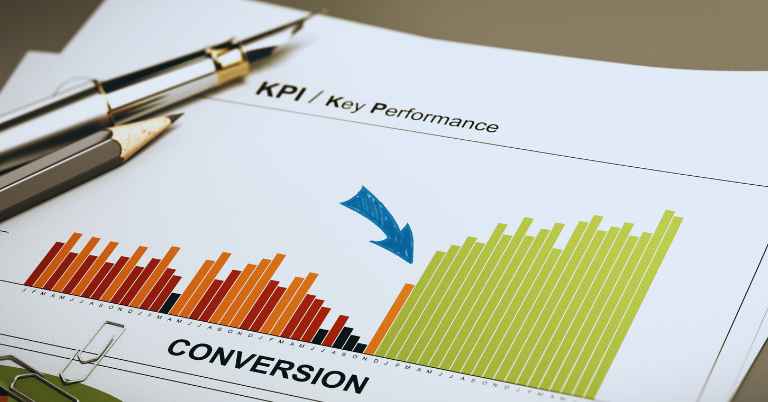
Improving Conversion Funnel Performance
If you have an online business, you know that the success of your website relies heavily on the number of conversions you can generate. A conversion occurs when a visitor takes a desired action, such as making a purchase or signing up for a newsletter. To optimize your customer journey and boost your conversion rates, it’s crucial to understand and improve your conversion funnel performance.
Analyzing Funnel Metrics
One of the first steps in improving your conversion funnel is analyzing the relevant metrics. This helps you gain valuable insights into your customers’ behavior and identify potential areas of improvement. Some key funnel metrics to focus on include:
| Metric | Description |
|---|---|
| Conversion Rate | The percentage of visitors who complete the desired action. |
| Bounce Rate | The percentage of visitors who leave your website without taking any action. |
| Drop-off Points | The stages in your funnel where visitors tend to abandon the conversion process. |
| Page Load Time | The time it takes for your web pages to load, which can impact user experience and conversion rates. |
By regularly monitoring these metrics, you can identify any bottlenecks in your conversion funnel and take appropriate actions to optimize them. For instance, if your drop-off points occur at the checkout stage, you may need to improve your payment process or offer incentives to encourage visitors to complete the purchase.
A/b Testing And Optimization Techniques
Once you’ve identified areas of improvement in your conversion funnel, you can use A/B testing and optimization techniques to refine your strategies and maximize conversions. A/B testing involves creating two or more variations of a webpage or element and measuring which version performs better. This allows you to test different designs, headlines, call-to-action buttons, and other variables to determine the most effective combination.
When conducting A/B tests, it’s important to focus on one variable at a time to accurately measure its impact. By continuously optimizing and testing different elements, you can steadily improve your conversion rates over time.
Additionally, implementing optimization techniques such as personalization and remarketing can also enhance your conversion funnel performance. Personalization involves tailoring the user experience based on individual preferences and behaviors. This can be done by displaying personalized product recommendations, sending targeted emails, or offering exclusive discounts based on user data.
Remarketing, on the other hand, allows you to reach out to users who have shown interest in your products or services but have not made a purchase. This can be done through targeted ads on other websites or email campaigns specifically designed to re-engage these potential customers.
By continuously analyzing funnel metrics, conducting A/B tests, and implementing optimization techniques, you can greatly improve your conversion funnel performance and achieve higher conversion rates. Remember, optimization is an ongoing process, and staying proactive is key to staying ahead of the competition.
Boosting Conversions And Maximizing ROI
To maximize ROI, you must first understand the customer journey – and that starts with mastering the conversion funnel.
Boosting conversions and maximizing return on investment (ROI) are two primary objectives for any business. In order to achieve these goals, it is crucial to understand and optimize the customer journey through a conversion funnel. A conversion funnel is a step-by-step process that leads potential customers from awareness to action, ultimately guiding them toward making a purchase or completing a desired action on your website.
Utilizing Personalization Strategies
In today’s competitive digital landscape, personalization has become a key driver for boosting conversions. By tailoring your marketing messages and content to individual customer preferences, you can create a more meaningful and engaging experience.
One effective strategy is to segment your audience based on demographics, behaviors, or previous interactions. This allows you to deliver targeted and relevant content that resonates with each specific segment. For example, if you run an e-commerce store selling clothing, you can use personalization to showcase products that match the customer’s browsing or purchase history.
Personalization can also extend beyond the website. By utilizing dynamic email marketing campaigns, you can send personalized email content with product recommendations, special offers, or reminders to bring customers back to your site. Implementing personalization strategies throughout the customer journey can significantly increase conversion rates and improve customer satisfaction.
Leveraging Marketing Automation
Marketing automation is another powerful tool for boosting conversions and maximizing ROI. By leveraging automation software, you can streamline and optimize various marketing processes, saving time and resources while delivering timely and relevant messages to your audience.
One way to leverage marketing automation is by setting up automated email sequences. For example, when a customer signs up for your newsletter, you can automatically send a welcome email followed by a series of nurturing emails that gradually guide them toward making a purchase. This helps to build trust and brand loyalty while gently nudging customers through the conversion funnel.
Additionally, marketing automation allows you to track and analyze customer behaviors and interactions, allowing for more informed decision-making. By monitoring metrics such as click-through rates, open rates, and website engagement, you can identify areas for improvement and make data-driven optimizations to your marketing campaigns.
To boost conversions and maximize ROI, it is vital to understand and optimize the customer journey through a conversion funnel. By utilizing personalization strategies and leveraging marketing automation, businesses can create tailored and engaging experiences, ultimately driving more conversions and increasing their return on investment.
The Future of Conversion Funnels
The future of marketing lies in turning data into insights and insights into actions within your conversion funnel.
As technology continues to evolve, the future of conversion funnels will be shaped by new trends and advancements. Here’s a glimpse into what’s ahead:
AI and Machine Learning
AI and machine learning are transforming conversion funnels by providing advanced tools for personalization and optimization:
- Predictive Analytics: AI-driven predictive analytics can forecast future customer behavior and preferences, allowing for more targeted marketing efforts.
- Personalized Experiences: Machine learning algorithms can analyze user data to deliver highly personalized experiences, increasing engagement and conversion rates.
Predictive Analytics
Predictive analytics involves using historical data to predict future trends and customer behavior:
- Behavioral Predictions: Analyze past interactions to predict how leads are likely to behave and tailor your funnel strategies accordingly.
- Churn Analysis: Identify patterns that indicate potential churn and implement strategies to retain customers before they leave.
Conclusion
In essence, optimizing your conversion funnel is crucial for guiding your customers on a seamless journey toward completing a desired action. By understanding each stage of the funnel and ensuring a user-friendly experience, you can increase your chances of converting potential leads into loyal customers.
So, take the time to analyze and optimize your conversion funnel to enhance your overall marketing strategy and drive substantial business growth. Start optimizing today and watch your customer journey flourish!



![6-Month Local SEO Plan [Download Your Complete Proposal Template]](https://www.sajibroy.com/wp-content/uploads/2025/01/6-Month-Local-SEO-Plan-Download-Your-Complete-Proposal-Template.jpg)

